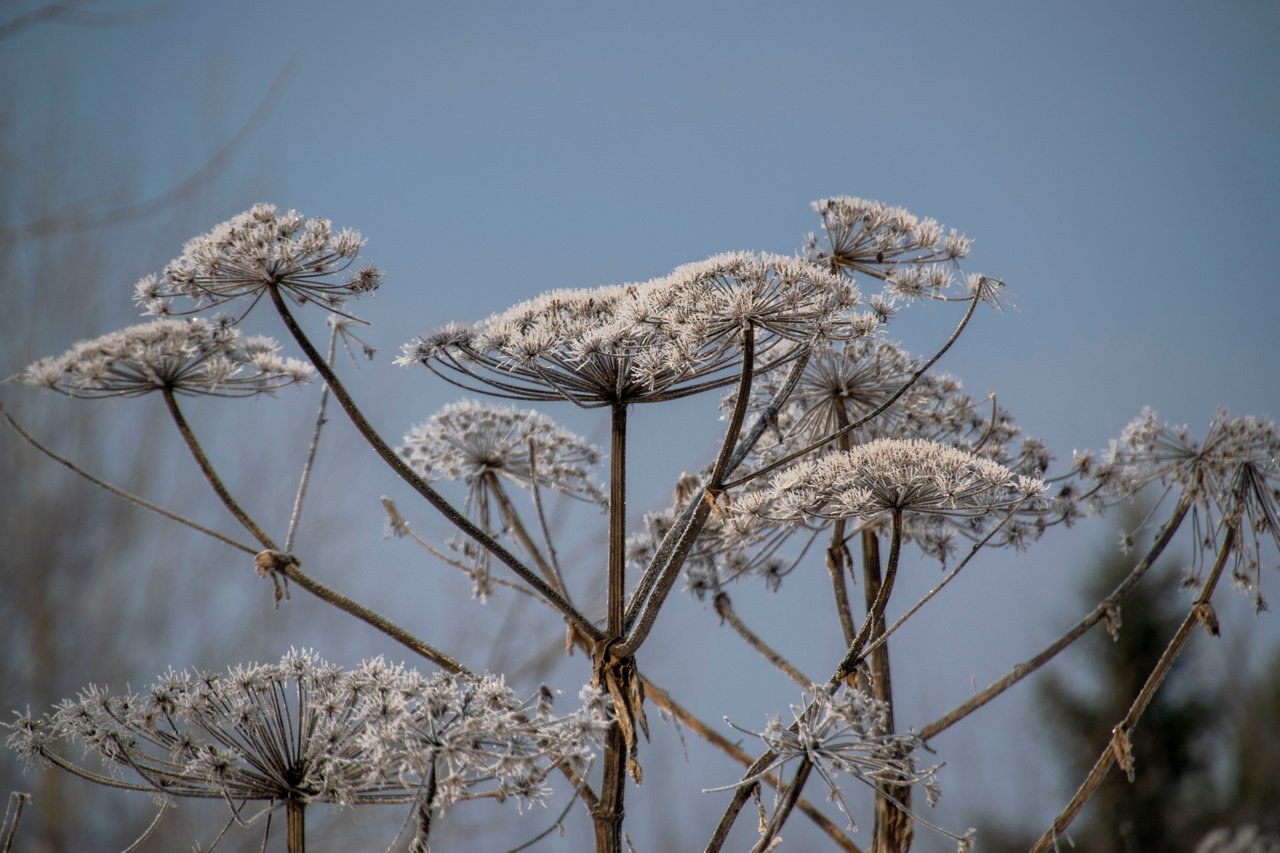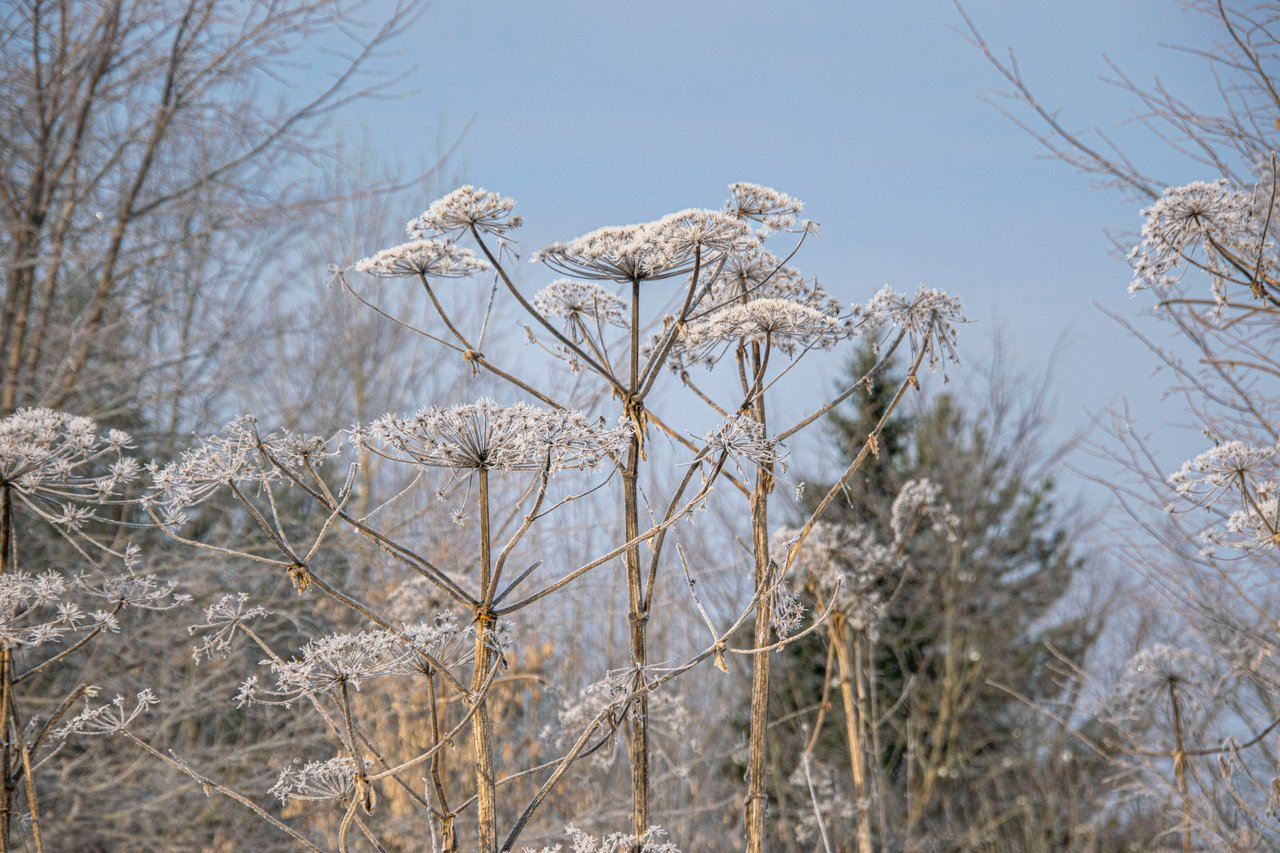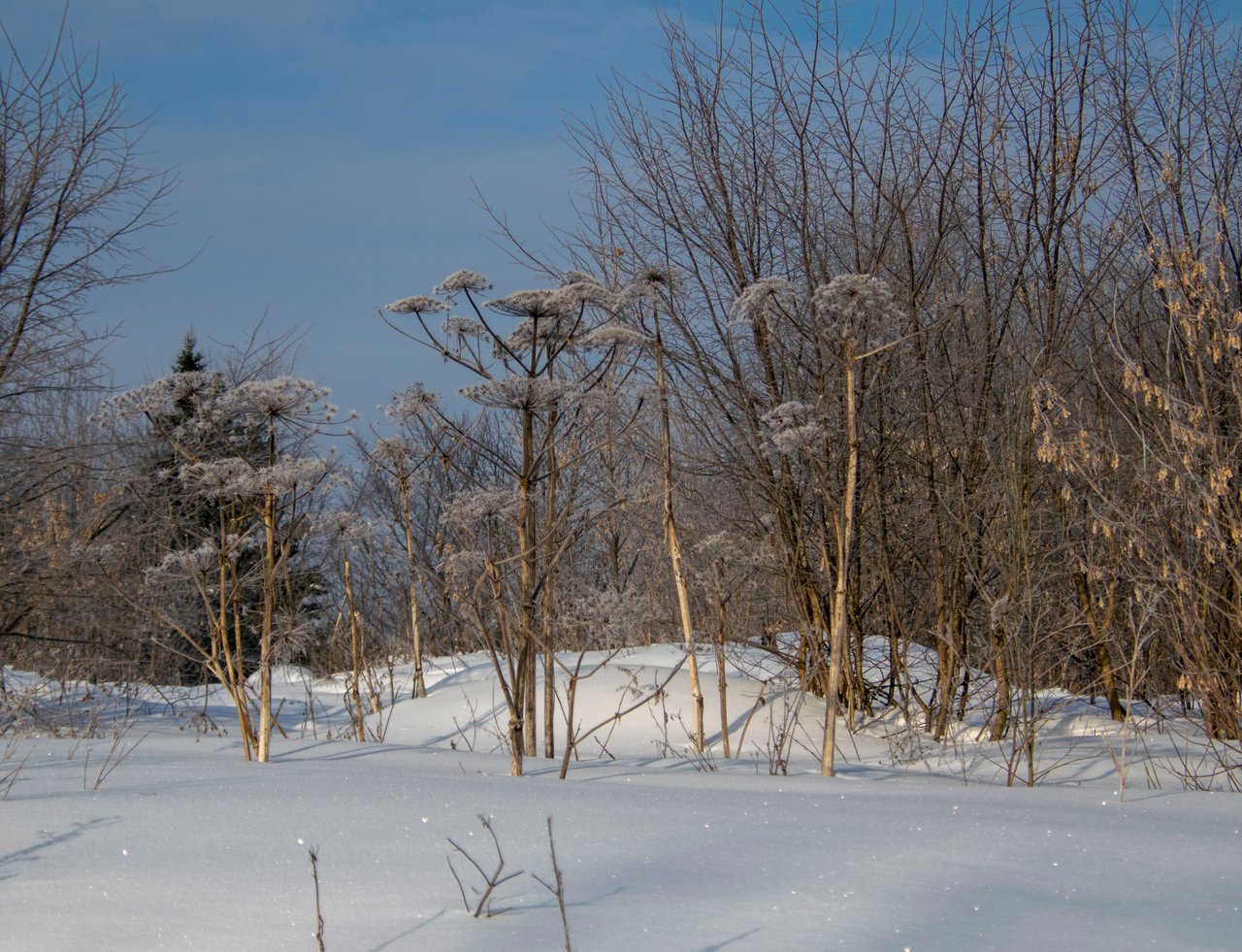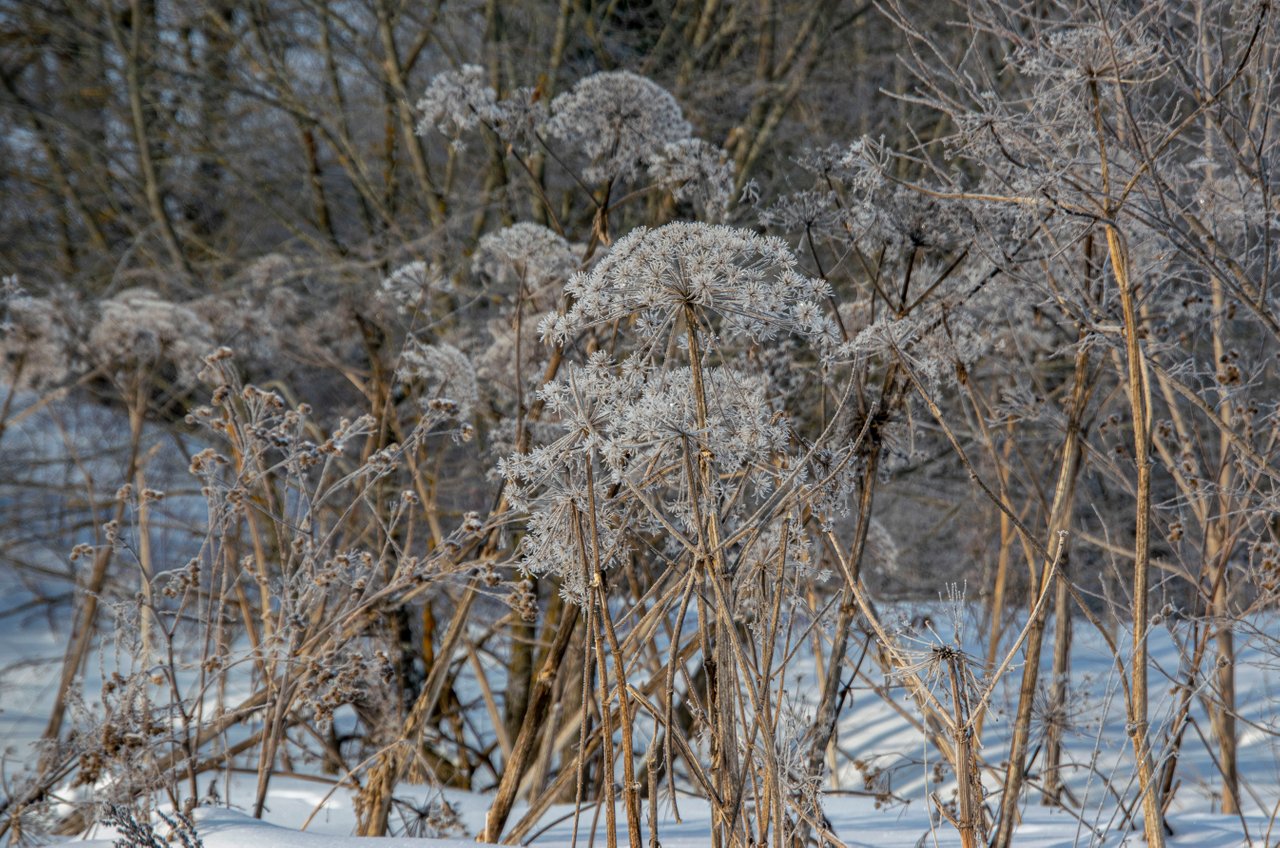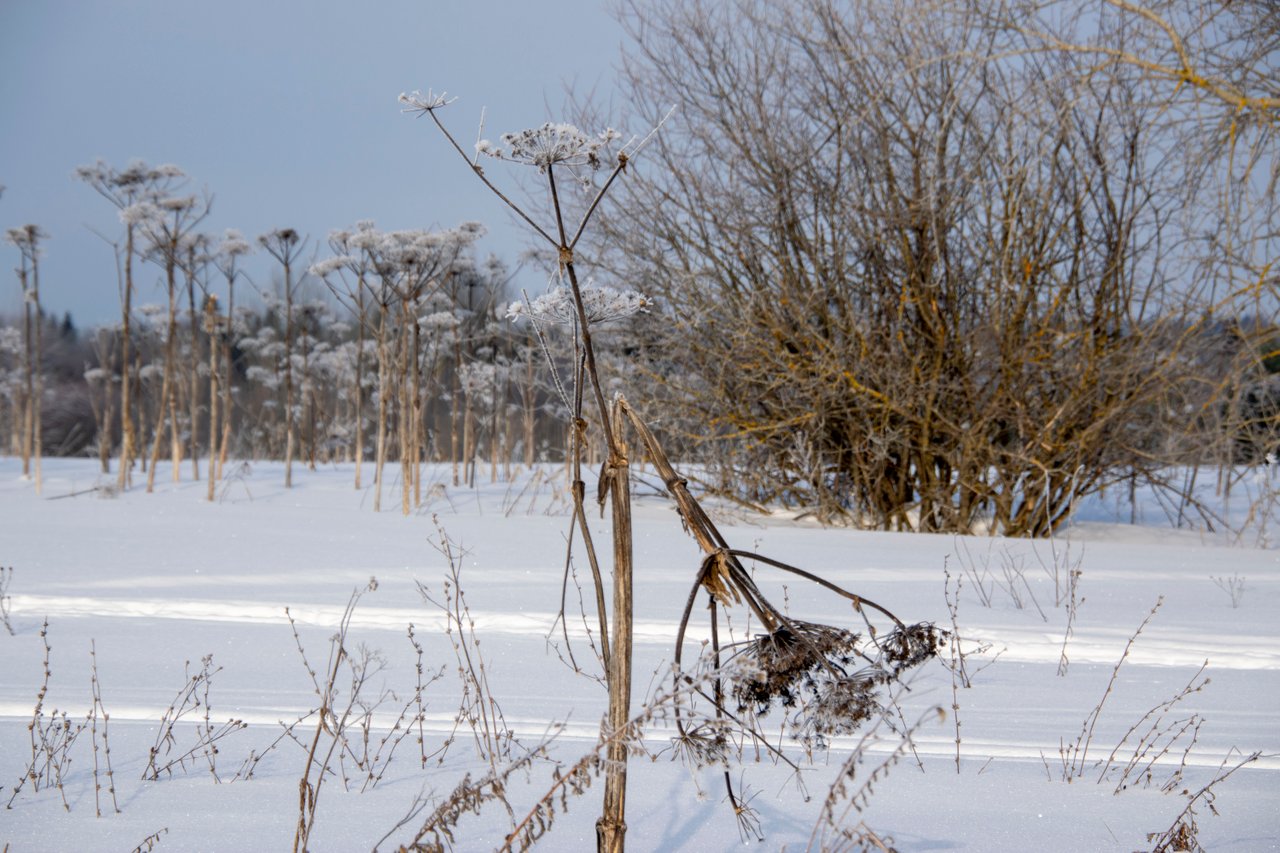This post was written specifically for the #club100 // Сontest STEEM PLANTS : Week #47 by @strawberrry.
The Hogweed is the very plant that enslaved the whole of Russia. Of course, I said this figuratively, but sometimes people even weep from his presence. It is dangerous to health in the summer, especially on sunny days. The juice of this plant can produce a chemical burn of human skin. Wounds heal very badly.
So what is so strange about this plant?
Sosnowski's hogweed (Latin: Heracléum sosnówskyi) is a large herbaceous umbrella plant. It comes from the Caucasus, it was from there that the seeds of the plant were originally imported in the second half of the last century to the European part of the USSR for use as silage feed for cows in winter.
The hogweed very well fit into the natural environment and began to take over the territory as a weed. It has no natural enemies, so nothing has prevented its spread.
They refused to use it as feed for cattle, because it turned out that the milk is bitter and has an unpleasant taste. And the golden time of the Hogweed has come. In 2015, this plant was entered into the register as a weed and a biological war was declared against it. But while people are clearly losing this battle, and it seems to me that if there is no further systematic extermination of the plant, the hogweed will never disappear from the roadsides of our roads, from our meadows and fields, as well as from the outskirts of cities and villages. And people will continue to get burns from this plant.
Борщевик - это то самое растение, которое поработило всю Россию. Конечно, это я сказал образно, но от его присутствия иногда люди даже ревут. Оно опасно для здоровья в летнее время, особенно в солнечные дни. Сок этого растения может произвести химический ожог кожи человека. Раны очень плохо заживают.
Так что же всё же такого странного с этим растением?
Борщеви́к Сосно́вского (лат. Heracléum sosnówskyi) — это крупное травянистое зонтичное растение. Родом оно с Кавказа, именно оттуда были завезены первоначально семена растения во второй половине прошлого века на европейскую часть СССР для использования в качестве силосного корма для коров в зимний период.
Борщевик очень прекрасно вписался в естественную среду и начал захватывать территорию как сорняк. У него нет никаких природных врагов, поэтому ничто не мешало его распространению.
Использовать в качестве корма для крупного рогатого скота отказались, потому что оказалось, что молоко горчит и имеет неприятный привкус. И наступила золотая пора Борщевика. В 2015 году это растение было внесено в реестр в качестве сорняка и ему была объявлена биологическая война. Но пока люди явно проигрывают эту битву и мне кажется, что если не будет дальнейшего планомерного истребления растения, то борщевик никогда не исчезнет с обочин наших дорог, с наших лугов и полей, а так же с окраин городов и деревень. И люди будут продолжать получать ожоги от этого растения..
Under some particularly good conditions, the hogweed grows very tall. I met him with a height of more than 2 and a half meters for sure. I couldn't reach the top of his head.
The first time I met this plant was in 1984. I was lucky that it was the second half of September, the plant had already dried up and was subjected to the first frosts. It was a whole field of hogweed and I was walking under these big umbrellas and didn't know what kind of interesting plant it was. Then even schoolchildren were sent to remove these huge plants. No one knew that it was life-threatening. People are sometimes such idiots, considering themselves masters of nature...
При каких-то особо хороших условиях борщевик вырастает очень высоким. Я встречал его высотой более 2 с половиной метров точно. Я не смог достать до его макушки.
Первый раз я встретил это растение в 1984 году. Мне повезло, что это была вторая половина сентября, растение уже засохло и подверглось первым заморозкам. Это было целое поле из борщевика и я гулял под этими большими зонтиками и не знал, что это за такое интересное растение. Потом даже школьников послали удалять эти большущие растения. Никто не знал, что оно опасно для жизни. Люди иногда бывают такими идиотами, считая себя повелителями природы...
I know that in the summer they will again talk about the fight against hogweed in the TV news, they will name the sums of money allocated for the purchase of biological products. But all this fuss is more reminiscent of the unwillingness to destroy weeds. and about the possibility of stealing money from the state or regional budget under the guise of this struggle. Events should be held not at the time of flowering of the plant, but at the beginning of summer or even in May. But then everything will be very simple and uninteresting. This reminds me of the situation with roads - why build a high-quality, good thorough road once, if you can repair it every year? It's a gold mine for someone.
Я знаю, что летом снова будут рассказывать о борьбе с борщевиков в теленовостях, будут называть денежные суммы, выделеные на приобретение биопрепаратов. Но вся эта возня больше напоминает о нежелании уничтожить сорняки. а о возможности откладывать себе деньги в карман под видом этой борьбы. Мероприятия нужно проводить не в момент цветения растения, а в начале лета или даже в мае. Но тогда всё будет очень просто и неинтересно. Эот мне напоминает ситуацию с дорогами - зачем строить качественну. хорошую основательную дорогу один раз, если можно каждый год заниматься её ремонтом? Это же золотая жила для кого-то.

